L’sea buckthorn (Hippophae rhamnoides) is a small shrub belonging to the botanical family of Elaeagnaceae. It is an ancient fruit of the rural tradition, which grows spontaneously in our country, especially in the central-northern regions. These are fruits that have a high commercial value, as they are among the richest in vitamin C. For this reason, for some years also in Italy some farms, run by enterprising young people, are experimenting with the intensive cultivation of this plant. , following the example of continental European countries such as Germany, where the crop is widespread.
In this article we therefore see the botanical characteristics of the Hippophae rhamnoidesthe techniques of organic farming, the properties and uses of the fruits.
The regional names of Hippophae rhamnoides
Sea buckthorn is known by vulgar names in several regions, demonstrating its ancient tradition in the north of the country. In Piedmont it is called gorra, in Lombardy spino dell’Adda And briuscioi, in Veneto sbregavache, white spin dell’Adese, spin de iara, in Friuli eu of cornitt, in Emilia spin de berleida And drafts.
Sea buckthorn description
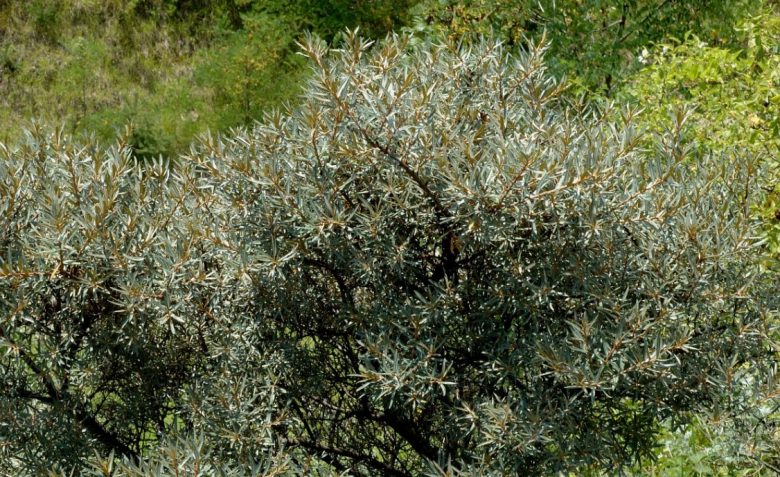
L’Hippophae rhamnoides it is a small bushy shrub, on average 1-3 meters tall. It has a great aptitude for emitting basal suckers, but it can also be raised as a tree, with continuous suckling. If it is raised in this way, it can reach up to 6 m in height and, exceptionally, up to 10 m.
It is a deciduous, very branched and thorny species (except, sometimes, in the older specimens). It is above all the short branches that are thorny, in fact they have a tapered shape and end with a thorn. The young branches are instead covered with reddish scales, with dark brown, smooth and shiny bark in the young specimens. Over time, the cortex cracks and becomes fibrous-scaly. The dense branching is very similar to that of the wild blackthorn.
Leaves
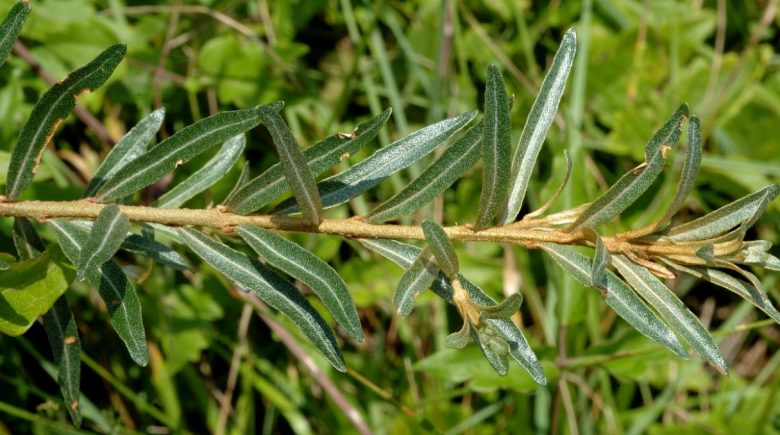
Sea buckthorn leaves are alternate and lanceolate in shape, similar to those of rosemary plant. They wrap the branches tightly, are very narrow and have a very short petiole, almost absent. The margin is always full.
The upper page of the leaf is dark green, while the lower one is silvery-gray, due to the presence of a thick layer of hair.
Flowers
L’Hippophae rhamnoides it is a dioecious species, that is, with male and female flowers carried on different plants. This means that, for a good fruiting, it can never be cultivated in single specimens.
The male flowers are inserted on small spikes, have a calyx of 2 sepals that enclose the 4 stamens, the corolla is missing.
The female flowers are inserted on the branches in isolation or in pairs, they have a tubular envelope divided into 2 at the apex, which encloses the ovary.
In general, the size of sea buckthorn flowers is small, the color is greenish.
Flowering occurs between April and May, simultaneously with the release of the leaves.
Fruits
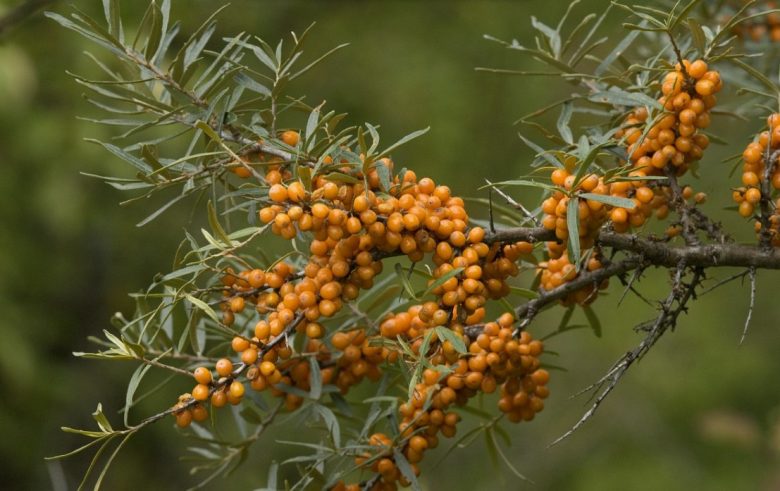
The fruits of the sea buckthorn are ovoid-goby drupes, yellow-orange in color, 6-8 mm in diameter. Inside they contain a stone with a very acidic pulp. In other words, they are formed by a dry fruit (achene) surrounded by the receptacle that has become fleshy. Ripening takes place in autumn.
It is not easy to collect the fruits of this plant, especially in the spontaneous ones, placed in inaccessible places, since the growth is dense and the thorns are felt.
Natural habitat of sea buckthorn
Sea buckthorn is widespread spontaneously in central-northern Italy, with the altitude limit of 1,800 m asl of the alpine valleys.
From a distance it is easily recognized, due to the rich and dense greyish foliage. It grows preferably in stony places, such as in the middle of gravel, at the edges of rivers and streams, where it manages to form compact masses. It prefers calcareous soils, such as those of eroded slopes. However, we also find it in wet mountain meadows.
The species is heliophilous, able to grow only in sunny soils and with low vegetation around it. As the lower branches grow, they become etiolated by their own shade, so the leaves and fruits only grow on the outside of the shrub or bush.
Ornamental or fruit-bearing shrub?
In the past, sea buckthorn also had a certain forest importance, thanks to its stoloniferous root system, capable of retaining the land, as well as its polloniferous attitude. It was one of the most popular plants for the preliminary restoration work on the eroded mountains. It was also used as a plant to delimit the boundaries of the land, thanks to the dense and thorny vegetation that forms an impassable barrier, both for grazing and wild animals.
To date, sea buckthorn is grown for ornamental purposes or, more intensively, as a fruit cultivar, given the high commercial value of the same.
Obviously, the choice of cultivation purpose has practical implications from a cultivation point of view.
How to grow sea buckthorn
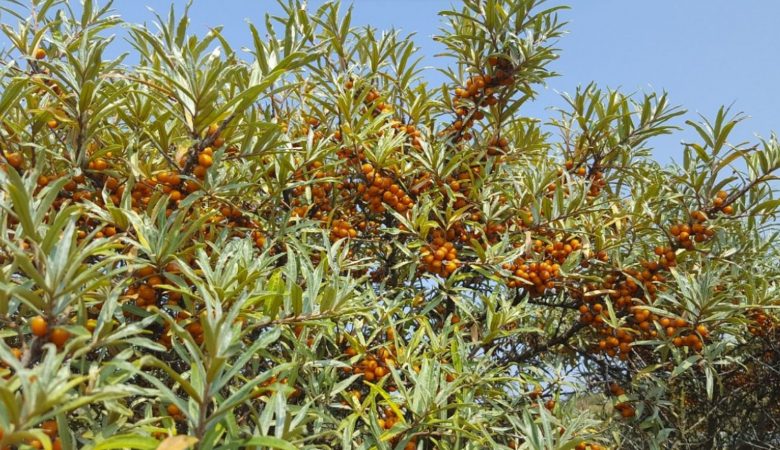
Given the characteristics of the plant of Hippophae rhamnoides we can say that it is a fruit species that can be grown anywhere, as it does not suffer from cold and frosts. Furthermore, it tolerates the wind well and can even be grown near the sea, in saline soils. The important thing, to have good fruit and a lush shrub, is that it is exposed to the sun.
The soil can also be poor in organic substancethe important thing is that it does not have a too compact structure, as happens in the clayey soilsfor which sandy or stony soils are preferred.
The ideal pH it is neutral or sub-alkane, with excellent resistance to active limestone.
How to start cultivation
There are several ways to start growing sea buckthorn; the choice depends on the purpose of the cultivation. For the introduction in the garden, as an ornamental crop or small domestic fruit, you can opt for sowing or transplanting the suckers.
For an intensive and specialized cultivation it is necessary to start from the seedlings.
Let’s see how to proceed.
Sucker transplant
The easiest way to start sea buckthorn cultivation in the family orchard is to weed out young plant suckers in their natural habitat. These, provided with a portion of the stump, will then be planted once rooted. The operation is done in late autumn, putting the sucker in a mix of earth and sand. The vegetative restart usually takes place without effort, so in the spring (or in the following autumn) the now rooted sucker can be transplanted into the ground.
Sowing
Sea buckthorn sowing is done in the fall, placing the seeds outdoors in small pots with a mix of soil and sand. In spring we will have the first shoots and then seedlings. For the first period, it is advisable to keep them in pots, transplanting them into the ground in autumn or the following spring.
The advantage of this technique is that the sea buckthorn seeds they are easily found in specialized shops on the net.
Purchase of sea buckthorn seedlings
The purchase of seedlings is an almost obligatory choice for those who want to start an intensive cultivation. The problem is their availability. In our nurseries or on the net there are potted plants that are 1-2 years old, but at a high cost for an entire crop. To find seedlings suitable for creating a new plant, it is necessary to turn to foreign nurseries, for example in France or Germany, where the cultivation of sea-buckthorn is quite widespread and consequently there are nurseries that reproduce the cultivar in quantity.
When planting the seedlings, remember to always include a certain number of males, since they have the function of pollinators. A bit like the kiwi cultivation, you need 1 male plant for every 4-5 females, maintaining a certain alternation between the plants. Another solution is to alternate entire rows of males and others of females.
The planting of sea buckthorn
The best time to plant sea buckthorn is absolutely autumn, but it can also be done in early spring. If the purpose is the ornamental one in the garden, two plants (one male and one female) are also enough, planted at 2-3 meters from each other. Over time, they will form a beautiful bush or hedge.
If the goal is intensive cultivation, however, it is advisable to plant in regular rows, in order to facilitate future harvesting operations, keeping 3-4 m between one plant and another, and just as much space between the rows.
Fertilization
Fertilization, as regards the sea buckthorn, is not necessary, even at the time of implantation. One of the characteristics of the cultivar is in fact that of being one nitrogen-fixing speciesexactly like the legumesthanks to the symbiosis with actinomycetes bacteria of the genus Frankia.
Therefore it is a shrub that enriches the soil, improving it.
Irrigation
Watering in the cultivation of sea buckthorn is necessary only in the first year, if we are transplanting the seedlings in the spring. Once freed, in fact, the plant no longer needs regular irrigation. We only intervene in emergency, after long periods of drought.
Weeding
Also in the first year after planting, it is advisable to keep the area where the plant is located clean of weeds. To do this, you can proceed with periodicals weeding operations. Once the upper part of the bush / shrub has formed we will not need to clean the soil from weeds.
Sea buckthorn pruning
Sea buckthorn pruning has the main purpose of keeping the plant in order and healthy, eliminating dry or damaged parts.
The polloniferous capacity of the species can be exploited for its expansion or, vice versa, to have rows of ordered plants. Therefore, the sucking operations vary according to the plant.
Another interesting pruning operation is topping, which stimulates the plant to compact and therefore to produce fruit in the lower and more accessible part.
Parasites and diseases
There Hippophae rhamnoides it is an extremely rustic species, which does not suffer from the attack of parasites. As for diseases, the main thing is to keep the soil well drained. On asphyxiated soils and which give rise to water stagnation there is, in fact, the risk of incurring root rot.
How and when to harvest the fruits of Hippophae rhamnoides
As mentioned, the fruits ofHippophae rhamnoides they ripen in autumn, are very persistent on the plant and must be harvested before the arrival of frost. Harvesting is necessarily done by hand. For a farm it is very laborious, due to the presence of thorns on the branches, and therefore it is expensive in terms of manpower employed.
In the countries of northern Europe it is customary to cut the branches to speed up the operations, these are then shaken to make the fruits fall. Be careful though, because the berries are delicate and must be placed in low layers so as not to damage them.
Properties and use of fruits
Sea buckthorn fruits contain high amounts of vitamin C, vitamin E, organic acids (omega 3, 6, 7 and 9), antioxidants, mucilage, minerals, polyphenols, phytosterol. They are real vitaminizers, as well as intestinal astringents and anti-inflammatories, and their diffusion in central Europe is explained by the impossibility in those countries to cultivate citrus fruits. There are many studies that attribute properties to the plant antioxidants, immunomodulators or again, antimocrobial.
The main use of the fruits goes through industrial processing, and concerns the production of juices, considered as food supplements and sold at high prices.
In the home, harvested fruits can be safely used for the preparation of jams and jellies, with a pleasant sour taste.

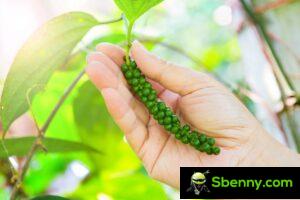
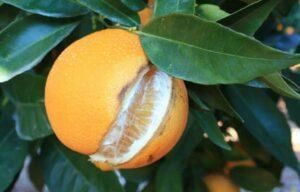
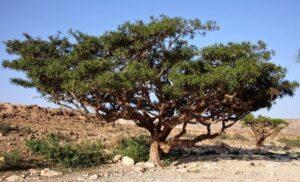
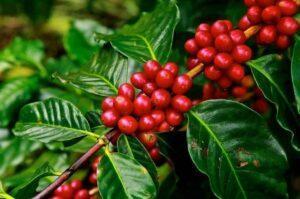
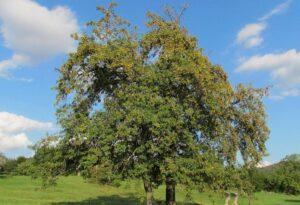
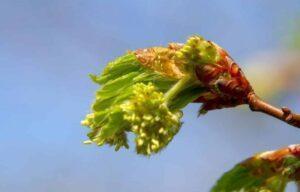
Start a new Thread